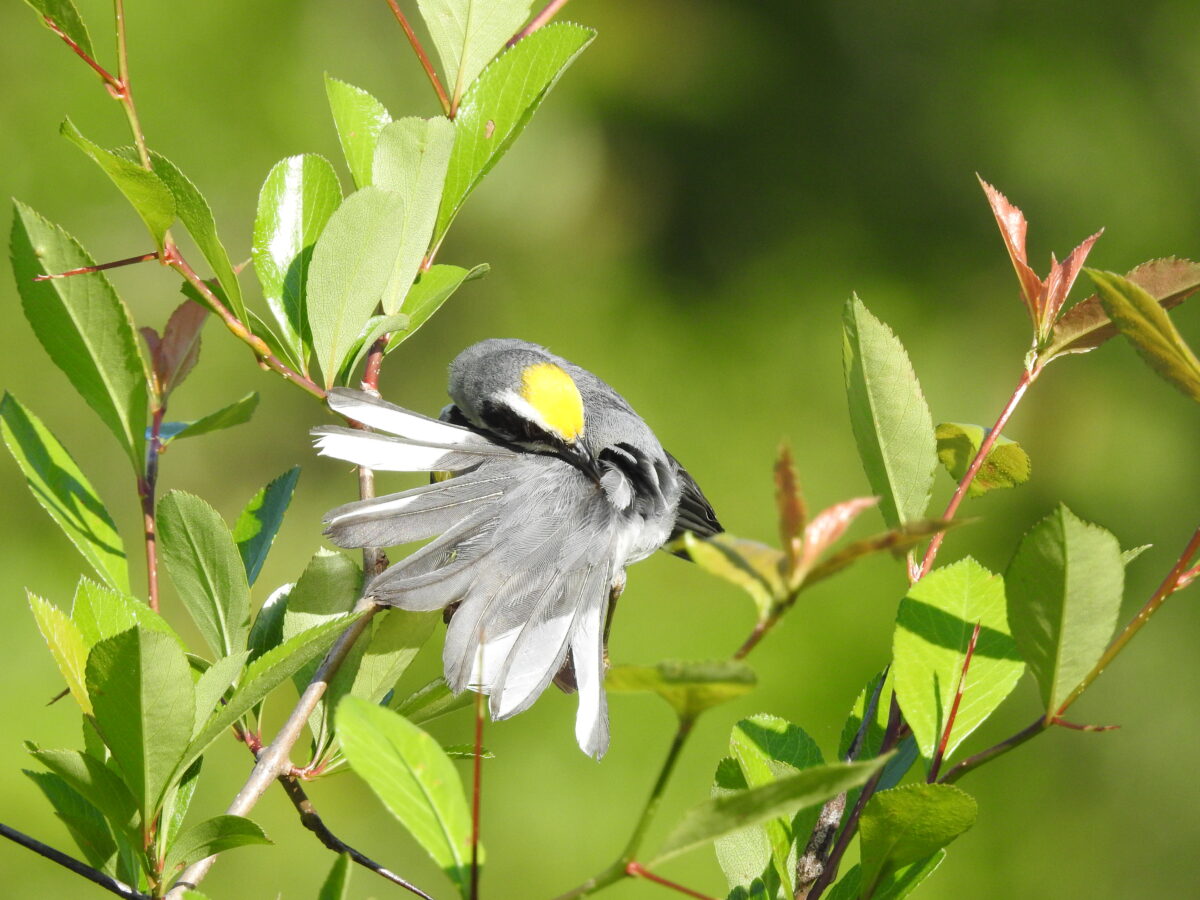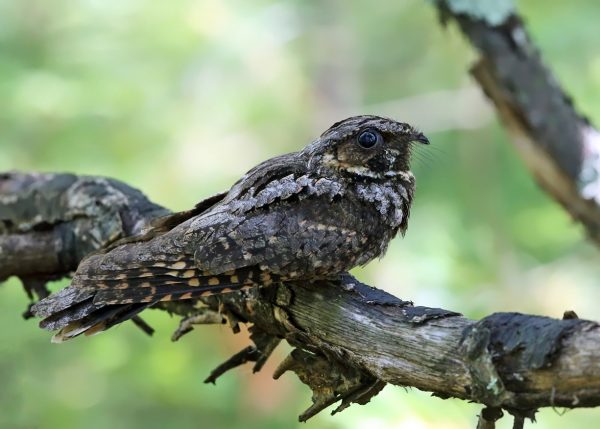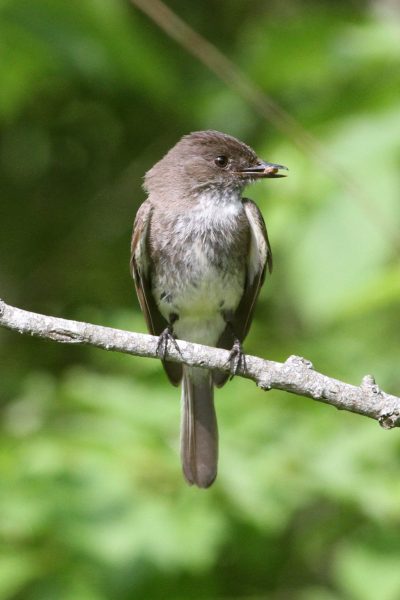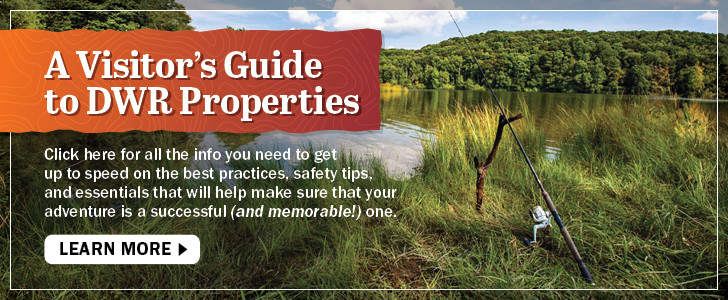By Sergio Harding

Golden-winged Warbler in Tazewell County (photo by Baron Lin)
The Atlas Final Products Committee* has been meeting consistently about once a month throughout the past year, as well as working between meetings. Our goal was to chart a course for transforming the raw data collected for the Atlas between 2016 and 2020 into published final products. We took a careful and considered approach to identifying key audiences and key content for these products, the latter including a review of Breeding Bird Atlas (BBA) publications from other states and provinces. At the heart of all Atlas publications are species-specific results, typically presented as Species Accounts, and we devoted time to identifying and prioritizing the specific information to convey through these accounts. Finally, we considered different publication formats to decide what would be best suited for Virginia.
Key Audiences
Atlas volunteers, and more broadly birders from Virginia and neighboring states, are two of the key audiences for the Atlas final products. We have also identified other folks whom we believe will have a keen interest in these products, including natural resource professionals, land planners, policymakers, landowners, university researchers, K-12 educators, and the general public. Given these diverse audiences, the information in the final products will be presented in a style that will be understandable to all, and will include supplemental technical information for those who wish to dig in a little bit deeper.
Key Content

Eastern Whip-poor-will (photo by Tom Murray)
Like many other BBA publications, the Atlas final products will lay out information introducing the Atlas and its objectives, provide an overview of Virginia’s geography and bird habitats, summarize Atlas field methods and data analyses, report on general results, and frame the final products in the context of bird conservation. This last part is important: the Atlas will be a vital tool to inform bird conservation decisions and accomplish on-the-ground conservation. Species-specific results will be reported as Species Accounts, with one account for each of the 210+ bird species breeding in Virginia. Each account will be data-rich: it will include maps of species distribution (current distribution and change in distribution between Atlases); maps of species abundance; tables summarizing block-level results; tables of breeding phenology (timing of different breeding stages, such as nest building, egg laying, fledged young, etc.); charts displaying population trends; and a written summary. An important decision was that this summary NOT provide basic life history and ecology information, as these are widely available through existing online resources such as allaboutbirds.org and the Audubon online bird guide. Rather than being duplicative, our focus is on providing Virginia-specific information derived directly from the Atlas data. Written summaries in the Species Accounts will therefore focus primarily on interpretation of the maps and figures, as well as information on what habitat characteristics best predict where individual species may be found.
Atlas Final Products Format

Eastern Phoebe (photo by Zack Grasso)
In considering publication formats, we focused on a traditional printed book, a digital version of a book, and a website. We took a systematic approach to weighing the pros and cons of each by ranking them by their significance. I am pleased to announce that, based on this process, the final decision is to publish the Atlas final products as a website.
We are certainly not the first BBA to publish as a website, with Minnesota and British Columbia having published theirs online in recent years. One of the overwhelming advantages of taking this approach is that it provides the greatest access to the information across audiences. We acknowledge that online access might not be ideal, or even possible, for everyone, especially in areas where broadband connections are not yet well established. However, an online format has the potential to be accessed not only by folks across much of Virginia, but by audiences across the country and beyond. Unlike a printed book, the website will be free and available to everyone. Without the constraints of the printed or digital page, we have greater flexibility in how we present content, and in how much content we can offer (ex. more maps, data results, etc.). Visual content such as maps, which are typically small on the printed page, will be easier to view on a website, where users can enlarge them in order to study them in more detail. Our current plans are for these maps to be static images. However, we also have the flexibility to build interactive maps that would allow users to pan, zoom, and search the map, providing a more immersive experience. A decision on whether to include interactive maps is pending a cost analysis.
Timelines and Budgets
Review and quality control of the data submitted through the Atlas eBird portal began in January 2021 and will be completed this spring. The data will then be analyzed in order to produce the maps and tables for the Species Accounts, with a Fall 2023 target for completion. Dr. Ashley Peele of the Conservation Management Institute at Virginia Tech (CMI) is leading both data review and analysis efforts, including working collaboratively with her VT colleague, Dr. Elizabeth Hunter**, to generate population models for breeding species. These will be followed by map production, writing, and website development. We anticipate that the Atlas final products website will be made public in late 2025.
The Atlas Final Products Committee recommendations presented above were recently approved by the Board of the Virginia Society of Ornithology (VSO) at their December 2021 meeting. The Department of Wildlife Resources (DWR) is funding the data review and analyses and will continue to provide staff support through the remainder of the project. The VSO will take on funding responsibility for the other project components, which are estimated at $274,000. Be on the lookout for fundraising campaigns by the VSO, and please spread the word to help make this a reality!
*The Atlas Final Products Committee is: Rexanne Bruno (VSO), Sergio Harding (DWR), Brian Moyer (DWR), Ashley Peele (CMI), Lisa Perry (VSO), Jessica Ruthenberg (DWR), Dixie Sommers (VSO) and Meagan Thomas (DWR).
** Assistant Unit Leader and Assistant Professor, USGS Virginia Cooperative Fish and Wildlife Research Unit


